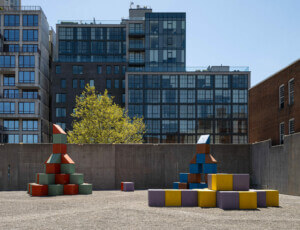Looking for exhibitions to check out this summer? Look no further. From a staging of works centered on domesticity and the home at Canal Projects, a survey of works from Van Gogh, and a lighting installation at the Museum of Fine Arts, Houston, here are exhibitions on view now from coast to coast that you don’t want to miss.
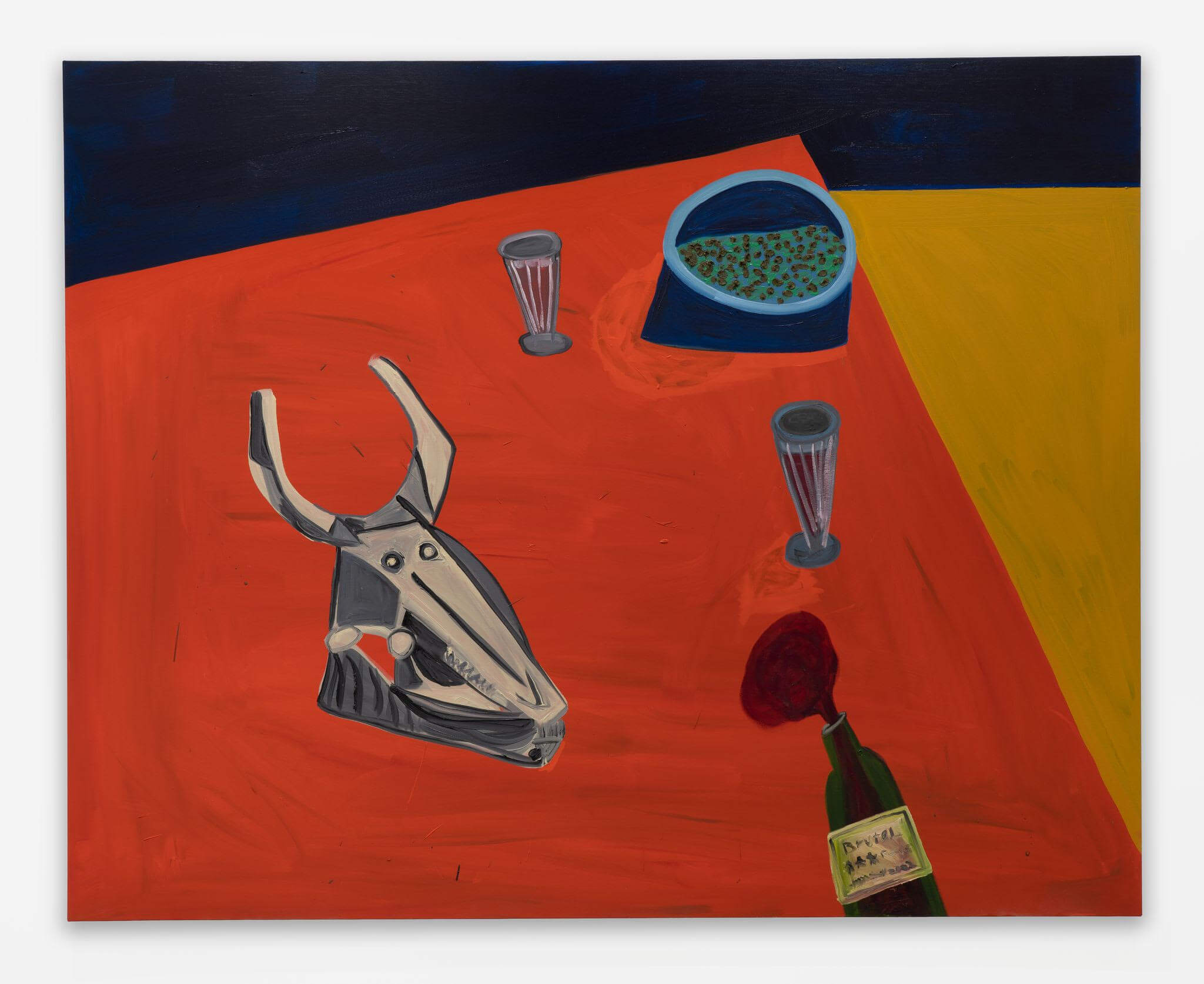
Dwelling
Canal Projects
351 Canal Street
New York, New York 10013
Through July 29
Home often looks like a state of mind, and it’s not always a reassuring picture. As seen in Dwelling, the current show at Canal Projects’ Chinatown gallery, the kinship of objects, however appealing or artfully arranged, isn’t enough to relieve the tediousness of introspection—or mortality, for that matter. Take Picasso’s Table, a canvas by the Brooklyn painter Marcus Jahmal that reinterprets the Cubist repast into a deathly composition of drinking glasses, an eating vessel, spilled wine, and a calf’s skull. Illustrator Kyung Me, who also hails from Brooklyn, transmutes the dread of domestic routines into moody noirscapes halfway between Double Indemnity and The Handmaiden, while Los Angeles–based painter Kenrick McFarlane colorfully invokes the estrangement of the self that is the lot of homo economicus. The works, which all hew closely to the humors of contemporary figuration, gain from their tasteful surrounds, courtesy of Brooklyn design studio Worrell Yeung.
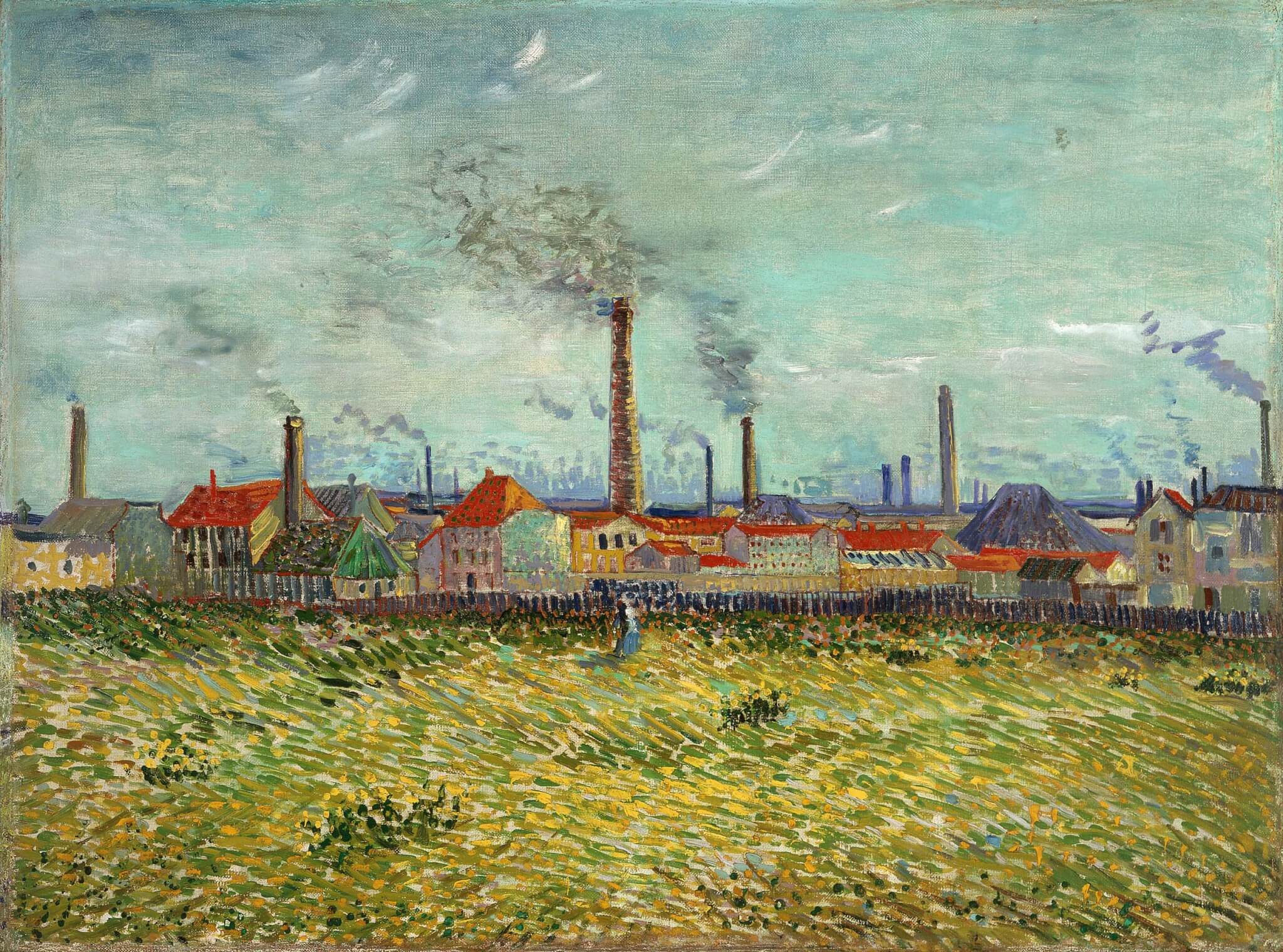
Van Gogh and the Avant-Garde
Art Institute of Chicago
111 South Michigan Avenue
Chicago, Illinois
Through September 4
What if Van Gogh’s churning skies weren’t the projective howls of a soul in torment, but rather toxic belches? Factories at Clichy, painted in 1887, reminds us that Van Gogh reckoned with the transformational effects of industry. On this canvas, smokestacks bloom with the proliferation of sunflowers. It is one of two dozen by Van Gogh showcased here, which, despite the marquee, also encompasses the work of four of his contemporaries: Georges Seurat, Paul Signac, Émile Bernard, and Charles Angrand. This “avant-garde” is retroactively constituted, though there are a few commonalities that justify the framing. In the 1880s, the unknowing postimpressionists frequented Asnières, a northwest suburb of Paris whose clamorous factories seemed to have elicited a new sensibility. Lurking off to the side of Signac’s placid “Ponton de la Félicité” at Asnières (Opus no. 143) is an unassuming gas holder. Van Gogh ventured a reproduction, a failure that nonetheless sent him on his way.
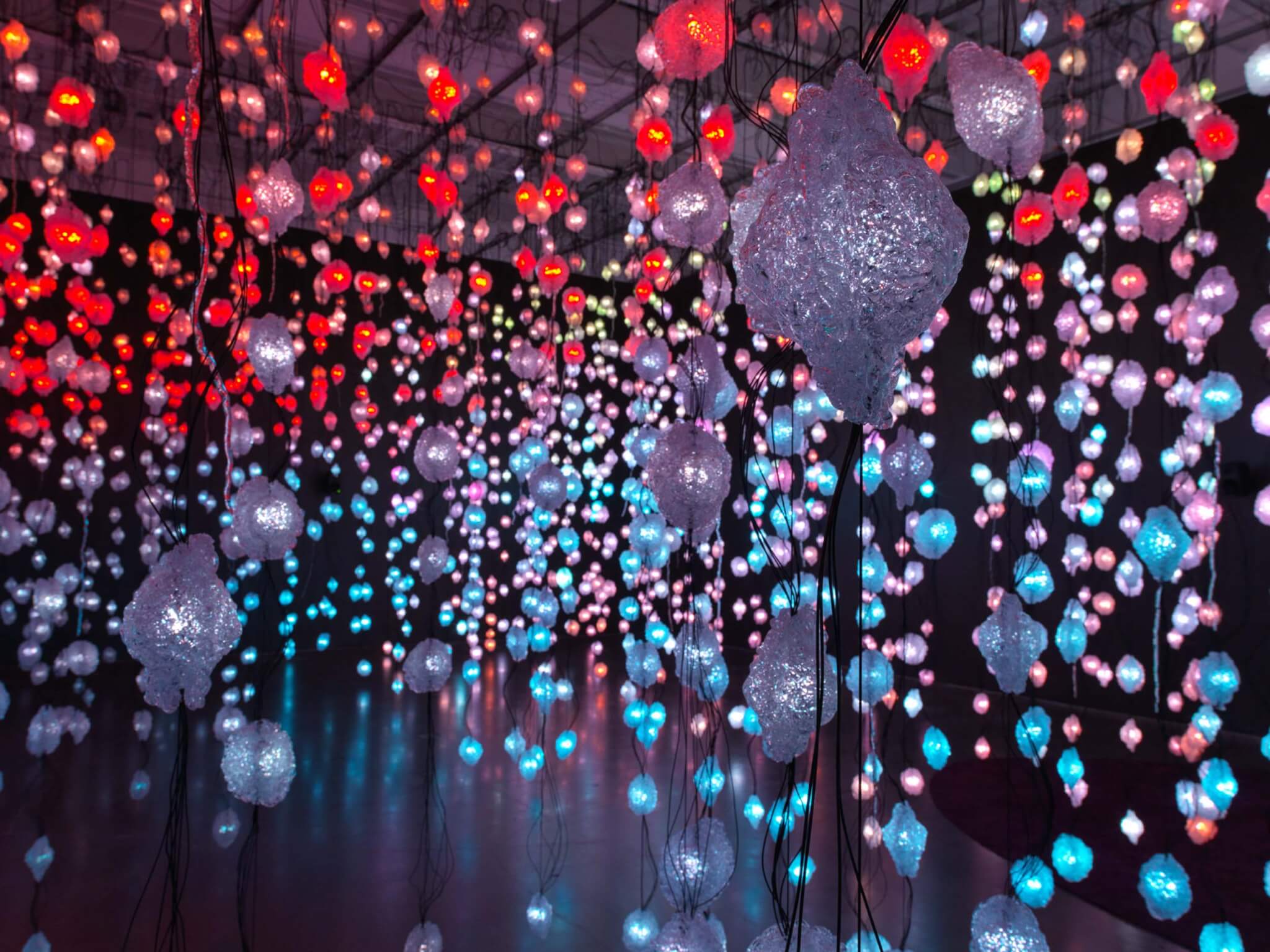
Pipilotti Rist: Pixel Forest and Worry Will Vanish
Museum of Fine Arts, Houston
1001 Bissonnet Street
Houston, Texas 77005
Is Pipilotti Rist the godmother of today’s profligate displays of “immersive” art like the Museum of Ice Cream and Van Gogh: The Immersive Experience? Unlike that frothy bilge, Rist’s installations aren’t invitations to pose, gambol, or lose oneself to childish urges. That they doubtlessly incite some of these same responses shouldn’t be taken as capitulation; there is plenty in Rist to unsettle, disturb, or just understand. First staged at the Museum of Fine Arts, Houston (MFAH) in 2017, Pixel Forest and Worry Will Vanish wholeheartedly take up pointillism’s cosmic pretentions, a position that sees in the infinitesimal an image of the universe. Selfie-takers fear not: There are blinking orbs galore. Characteristically for Rist, Worry partly flirts with the architecture itself, a rare fan-shaped design by Mies van der Rohe. Both pieces, plus a third (Peeping Freedom Shutters for Olga Shapir [2020]), were recently acquired by the MFAH. Given their popularity, it’s a sound investment.
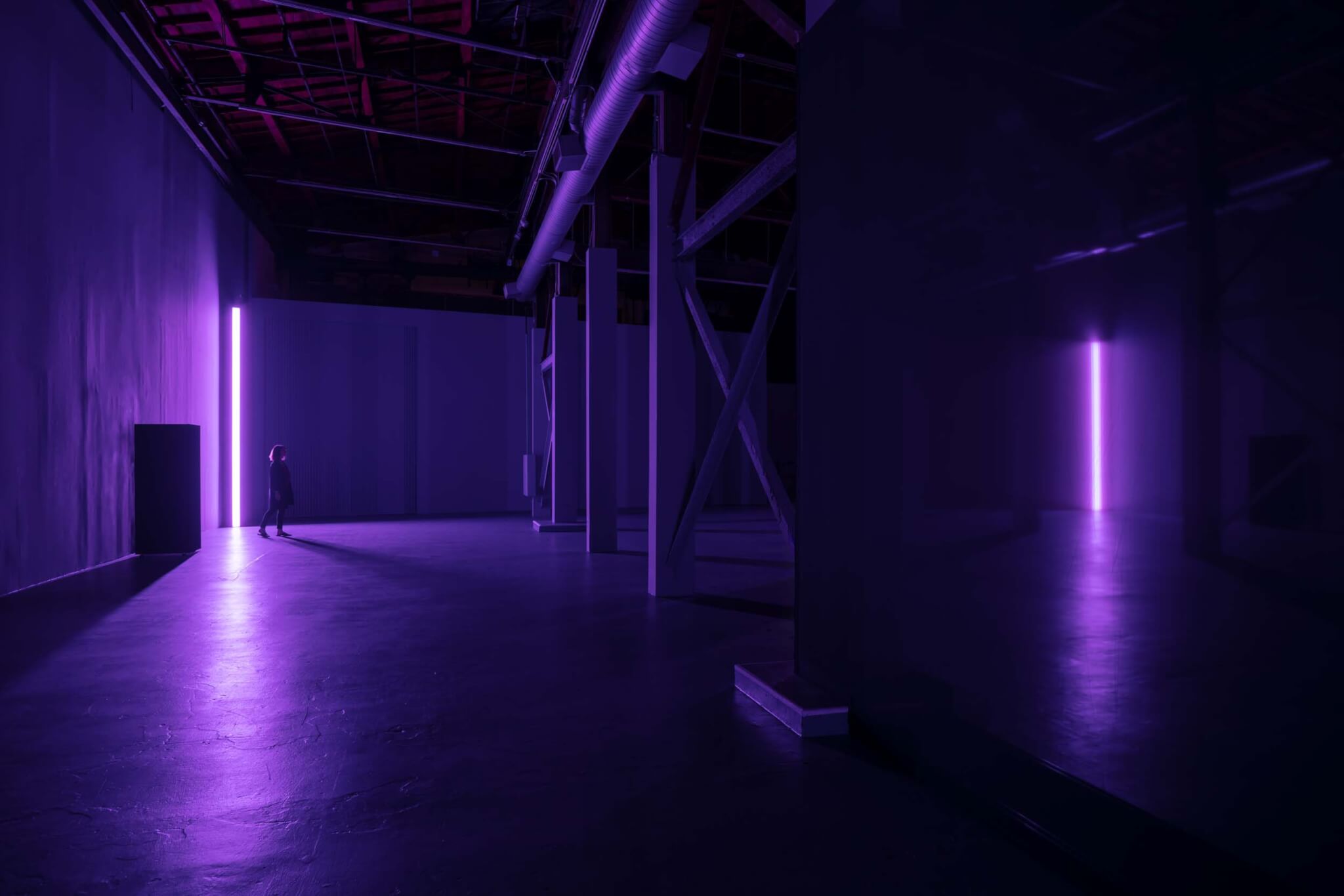
Carl Craig: Party/After-Party
The Geffen Contemporary at MOCA
152 North Central Avenue
Los Angeles, California 90012
Through July 23
Flashing light and sound constitute Party/ After-Party, an installation by the DJ Carl Craig at the Warehouse in Los Angeles. With its industrial connotations, the venue is utterly fitting for Craig, a habitué of the techno scene that sprang up in 1980s Detroit. The dark and steely mise-en-scène, complete with clangorous soundtrack, is meant to evoke late-night warehouse parties, albeit during open hours; the untz-untz beats dribble out into the surrounding museum, much to visitors’ bemusement. (Craig previously staged the piece in the basement of New York’s Dia: Beacon.) The most game among them can strut their stuff on the dance floor at the center of the lugubrious space, though the revelry isn’t meant to last. The overhead lamps flip on as the music drops out, revealing a spare room of plenty of incongruous outfits. You know what they say about parties: You gotta know when to leave.








